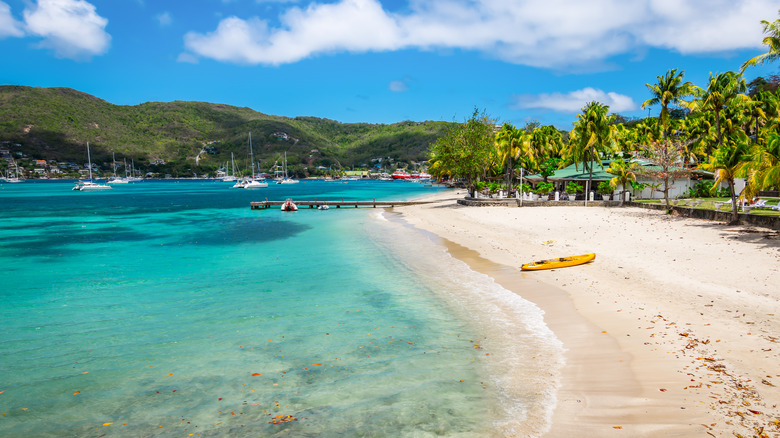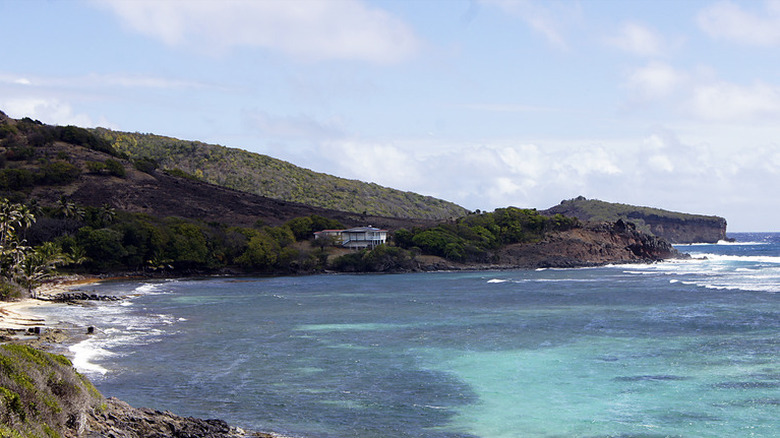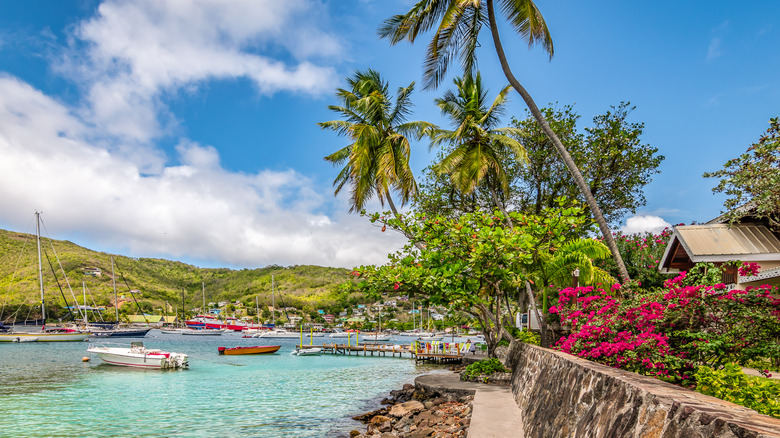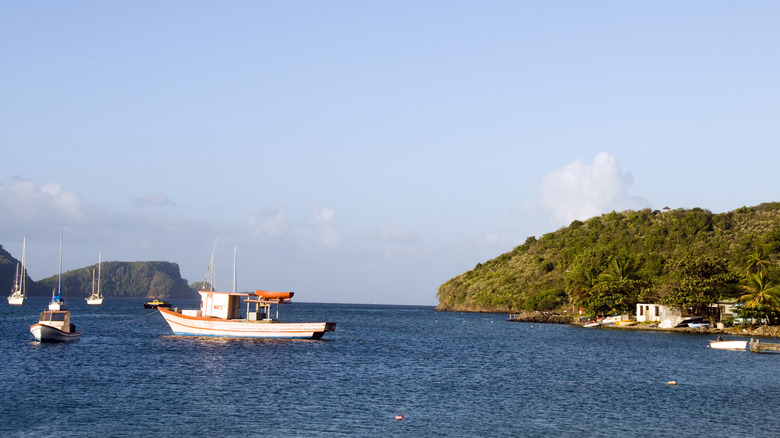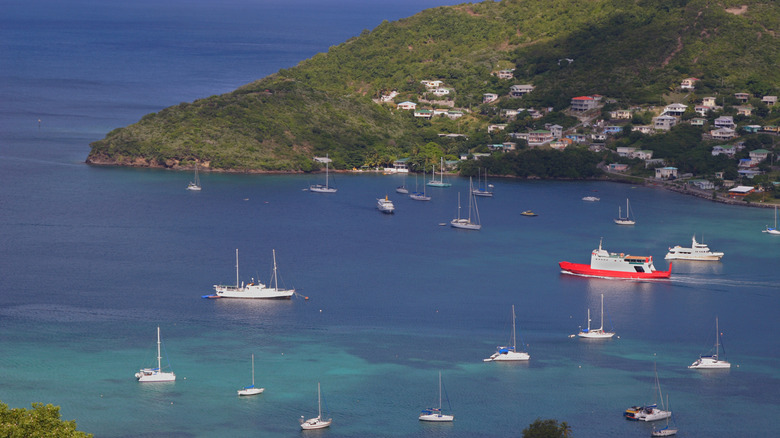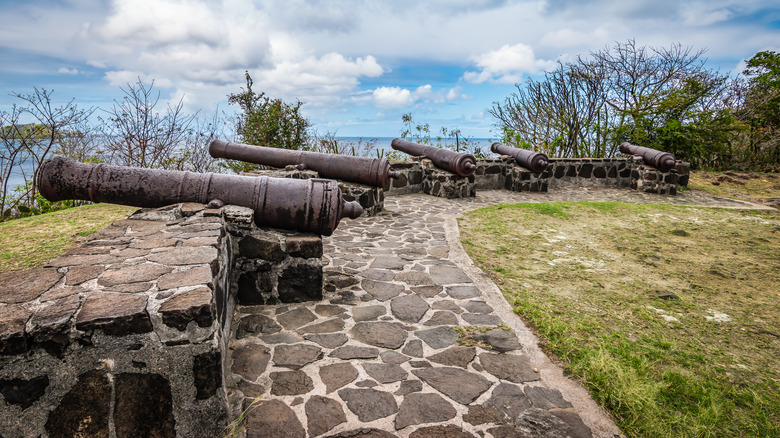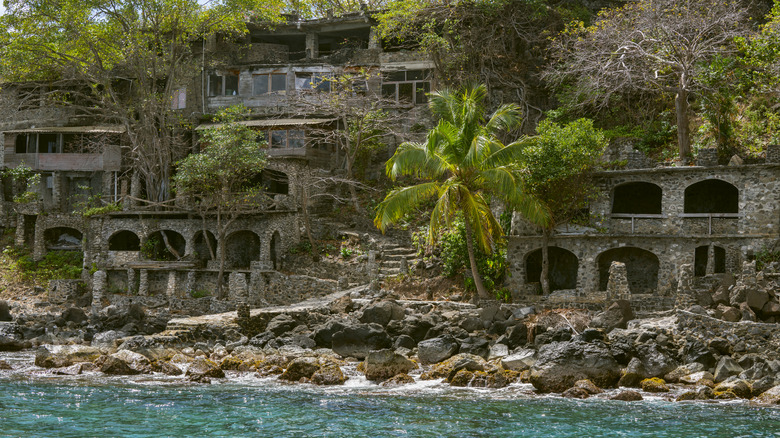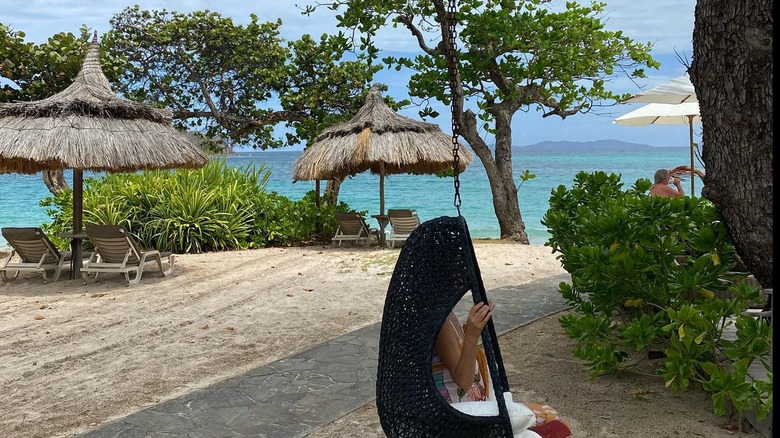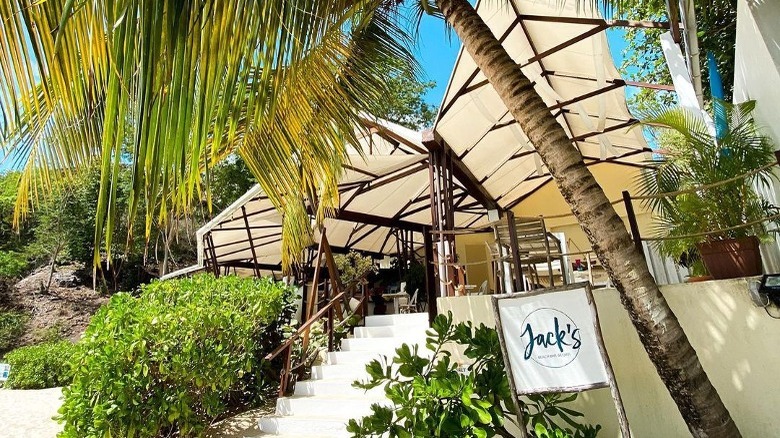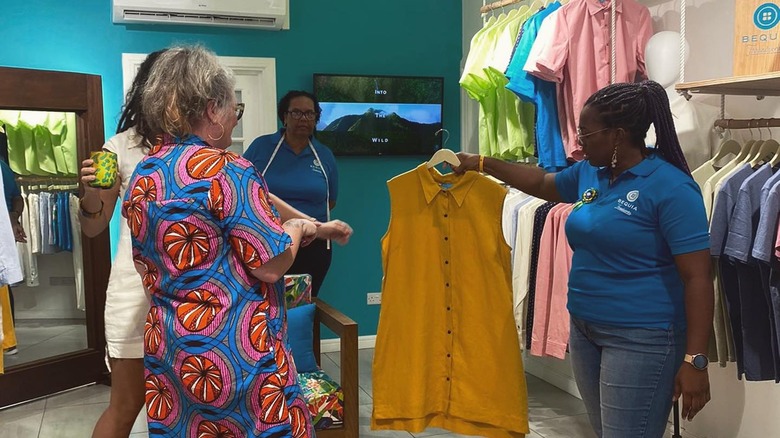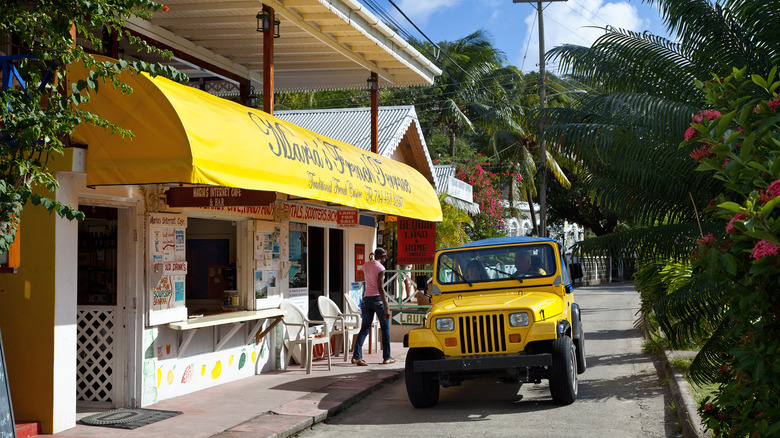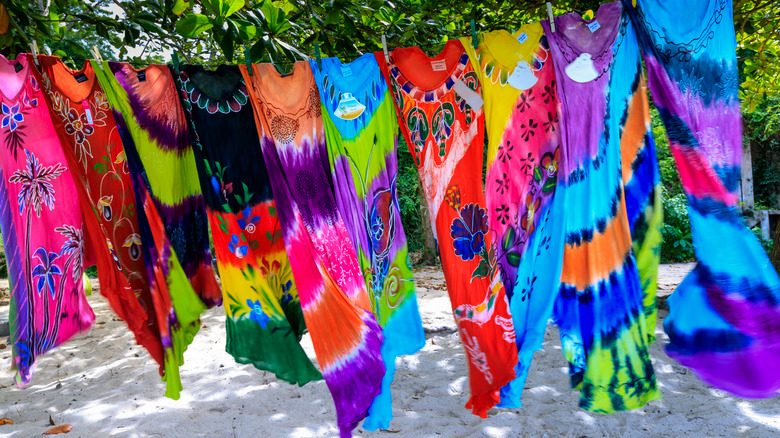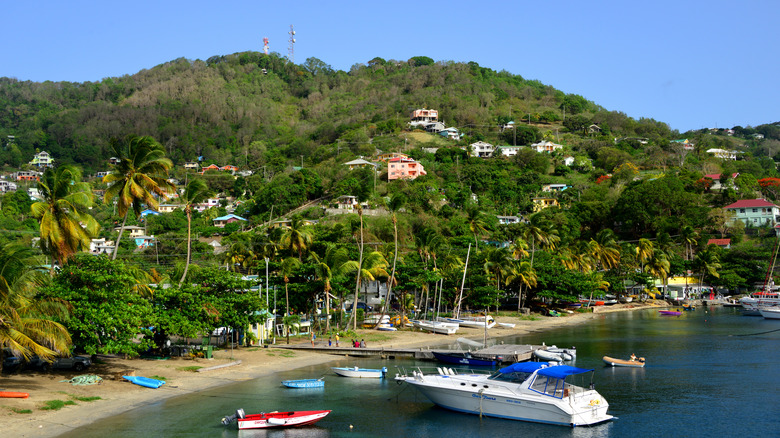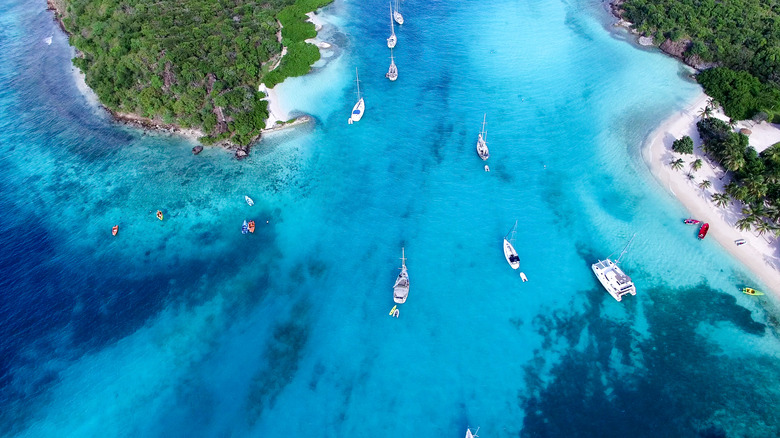Bequia: A Beginner's Guide To The Hidden Caribbean Gem
The Caribbean nation of St. Vincent and the Grenadines seems custom-made for travelers looking for blissful beaches and sparkling seas. The 32 islands and cays of the country sprinkled across the southern end of the Caribbean Sea between St. Lucia (to the north), Grenada (to the south), and Barbados (to the east) supply some of the most astonishing waters anywhere on the planet. Travelers will encounter a dazzling tableau of all shades of blue, from almost see-through electric tones to deep, dark, brooding ultramarine and pretty much everything in between. A popular yachting spot as a result, sailors zig-zag between each island, dropping anchor in a secluded cove for a refreshing dip or finding a quiet beach for a picnic or snooze.
While each locale has something to offer, Bequia, a Caribbean island that often flies under the radar, hits the sweet spot of being large enough to serve as an interesting destination for a break and small enough to retain a sense of intimacy and idyllic charm. It's also refreshingly free of mass tourism; even though it welcomes cruise ship passengers, smaller vessels usually visit and dock in the main harbor before ferrying in guests. For travelers looking for an isle that mega-resorts and overdevelopment haven't blighted that percolates with some of that old Caribbean magic, Bequia unquestionably fits the bill.
Where is Bequia, and how do you pronounce its name?
The combination of letters in "Bequia" makes it a little tricky to guess the proper pronunciation. Want a try? Here's a hint: It probably won't sound how you expect: it's pronounced "Beck-way."
In the Windward Islands section of the Caribbean in the southern half of the sea, Bequia sits less than 10 miles south of the nation's main island, St. Vincent, home to the country's main international airport. The island is actually closer to South America than the United States.
Apart from views of St. Vincent to the north and some smaller cays around it, Bequia really feels remote, a little realm that promises a mental and physical escape from the daily grind. After St. Vincent, Bequia is the largest island in the nation, though that certainly doesn't make it a teeming center of commerce, tourism, and population. In fact, quite the opposite.
What is Bequia like, and what language is spoken there?
Even as the country's second-largest island, Bequia comes in at only about 7 square miles. Shaped a little like the icon for a bolt of lightning, the electric destination manages to pack plenty in to its Lilliputian confines. The varied landscapes provide much of the appeal; visitors will find something for everyone, including green hills, woods that stretch to the shore, placid bays, gorgeous beaches, and rolling plains. Only about 5,000 people live on the island, and it doesn't take long to find yourself feeling right at home, as though you've been there for eons.
Residents may greet you in the street with a "good morning" or "hello," and a sense of civility and warmth permeates the island that is increasingly elusive in the travel space. The locals primarily speak English, and visitors will have no difficulty communicating with anyone on the island. Around Bequia's villages, you might hear a local Creole anchored by English but blended with words taken from French, Spanish, Portuguese, and languages brought centuries ago by enslaved Africans.
The history of Bequia
The name "Bequia" derives from a term given to it by the Kalinago, a tribe that traces its roots to South America. They called it "Becouya," which means "Island of Clouds," and visitors will understand what they meant even today: looking up, you'll likely see white, puffy clouds slide by the island's peaks and bays, punctuated by clear blue skies. Europeans staked their claim to the island in the 1700s, with the French formalizing plantations and lime, cotton, and sugar facilities. Eventually, the English wrested control of Bequia, and sugar production bloomed in time, becoming the main industry on the island.
The importance of sugar eventually faded, and islanders looked for new sources of income. Scottish settlers that came with the English started fishing and whaling there in the 1800s, and boat building also began to flourish. Whaling continues today, but on a smaller scale and under the watchful eye of the International Whaling Commission; only four whales can be hunted each year using traditional methods and hunting tools that were prevalent more than a century ago. Visitors looking to get an overview of the island's history should head to the Bequia Heritage Museum.
How to travel to Bequia
Given the proximity of Bequia to St. Vincent, the most cost-effective method of getting there is by ferry from the "mainland." Operators ply the route between Kingstown, the capital of St. Vincent, and Bequia's Port Elizabeth, with Bequia Express offering daily sailings. The trip takes about an hour. For anyone desperate for a quicker transfer, Jaden Sun Fast Ferry has boats that complete the journey in 30 minutes, but the schedule is limited, and some days have no voyages between the two islands. Fares are also slightly more expensive.
Some travelers prefer to fly directly to the island, even with frequent ferry connections from St. Vincent. Bequia's J. F. Mitchell Airport is tiny and a little over three decades old. The only option for reaching it is to charter flights from islands like Barbados or St. Lucia through carriers such as Grenadine Alliance.
Things to do in Bequia
You'll have no trouble finding entertainment in Bequia, though you can also take the opportunity to slow down and enjoy the quiet life. A few high points in the calendar stand out. Taking place early in the year, the Bequia Music Fest (canceled in 2025) promises a bonanza of singing and dancing. During the four-day event, which debuted in 2004, the island's fervor swells, and hotels and restaurants double up as venues. The artists present an eclectic mix, from steel pan and jazz to acoustic jams and buzzing DJ sets. Around Easter the annual regatta takes place, a yearly rite of passage that celebrates the island's sailing heritage. It got canceled in 2023, but locals always look forward to it.
Bequia also offers some of the best beaches in the Caribbea. Princess Margaret Beach rose to global fame in the 1960s when the eponymous British royal swam in its waters during her honeymoon — its fame is justified by a gorgeous sweep of sand fronted by gently lilting turquoise water. It also offers some of the top snorkeling in Bequia. Nearby, Lower Bay is equally mesmerizing, while Friendship Bay and Crescent Beach are easy places to while away a day. Out on the sea, sailing, diving, fishing, and water sports all make for alluring options.
Many choices open inland. The island features a turtle sanctuary, a restored plantation house, and Mount Pleasant, a peak with moving views of the Grenadine islands. Experienced hiking enthusiasts should also consider adding Mount Peggy to their itinerary for another impressive lookout over Admiralty Bay. Considered a challenging route, the trail spans nearly 3 miles there and back. Come prepared for narrow, steep, slippery, and muddy sections on your journey to Bequia's highest point.
Is there anything unexpected in Bequia?
On Bequia's western end, a rock arch with the same name anchors the community of Moonhole. The unique enterprise dates back to the 1950s, a time when a professional couple from the United States moved to the island to operate a hotel. They visited the rock arch, fell in love with it, and frequently traveled to the site by boat or on foot. In time, the duo embarked on building a campground using stone and flotsam and jetsam from the sea like whale bones and shells, which turned into a house where they eventually moved.
The pair built more homes, an office, and staff quarters, turning the outpost into a thriving community where housing construction and maintenance disrupted the environment as little as possible. They incorporated trees into the dwellings rather than cutting them, selected stones from the area, and set up footpaths to connect the buildings instead of paved roads. Visitors can now rent the houses as individual units, some of which come with fabulous views of the Moonhole rock arch.
Where to stay in Bequia
Bequia doesn't have any giant all-inclusive Caribbean resorts. Instead, visitors will find simple, locally-run hotels, inns, and guest houses, as well as many rental units around the island. All of these options lend a trip to Bequia a decidedly personal, connected sensibility.
For the most polished spot, consider Bequia Beach Hotel, a refuge on Friendship Bay with 10 acres of landscaped grounds and views of the island of Mustique. Some of its sumptuous accommodations even come with private pools. Meanwhile, spacious digs at The Liming feature sea views, and rates include breakfast. You also can't go wrong with Tropical Hideaway, a boutique property known for its heated infinity pool, beautiful environs, and top-notch service.
A range of apartments and villas around the island may appeal to visitors who prefer a more self-contained stay — some look over the boats at Port Elizabeth harbor, and others spy the island's undulating hills. The Lookout, a villa with four bedrooms nestled amidst a wealth of fruit trees, has earned high praise from visitors. It also divides into two rentable apartments if you don't need the full space.
Where to eat and drink in Bequia
Belmont Walkway, a paved path that lines the water south of Port Elizabeth along Admiralty Bay, has many places to eat and drink on the route. Among them, The Fig Tree stands out as a gem. With open water views, a Caribbean menu, and live music, it's a staple of the Bequia scene. Mac's Pizza & Kitchen, known for its lobster pizza, is another mainstay.
For dishes made with local ingredients that draw inspiration from around the world, check out Provision. The casual spot serves up options like Asian cabbage pancakes, gazpacho, and fish sandwiches. Alternatively, indulge in fresh pasta and seafood at Laura's, a restaurant known for its unforgettable sunsets and evening ambiance. At the airy Jack's Beach Bar on Princess Margaret Beach, you could come for the fine seafood and relaxed vibe and just as easily linger over a fresh cocktail as dusk descends.
Caribbean offerings are the lure at Fernando's Hideaway on Lower Bay. The brightly-colored chairs will get diners in the mood for a rotating menu of delights. For even more fun right on the sand, De Reef Restaurant & Bar is a chill local hangout offering lobster, fresh fish, and excellent views. If craft drinks served in a lounge environment are more your thing, instead head north to The Cocktail Lab at Bequia Marina for creative concoctions.
Where to shop in Bequia
While visitors don't come to Bequia to go on a shopping frenzy, they'll discover some interesting places to peruse. Travelers can look forward to small, independent boutiques, even in the island's sole shopping mall, Bayshore. It eschews international chains for individual stores and gift shops often operated by their owners. Looking for some local fashion? Stop by Bequia Threadworks, a non-profit seeking to improve the lives of its female staff, that sells its own clothing line called Noyo and pieces by designers from St. Vincent.
The island's central shopping hub is Belmont Road in Port Elizabeth, also known as Front Street, located by the ferry terminal. You'll encounter shops hawking marine supplies (useful for the yachties that anchor there) and drug stores, as well as more traditional retail. Some local specialties are replica model boats and jewelry made from whale bones; both should be available at spots along Front Street.
How to get around Bequia
The island is small enough that hardy travelers can walk everywhere, though if they plan to visit every part of Bequia on foot, they should be prepared for a workout of the calves. Hills rise along the island's spine, adding vertical lift to the exertion. Walkers should take lots of sunblock, water, and a hat; the sun is intense. Some visitors prefer to take taxis everywhere, a relatively easy way of getting around since there isn't a vast amount of terrain to cover; reaching anywhere on the island should take less than 30 minutes. If you're headed by taxi to a restaurant, the staff can call a cab to take you back afterward.
Scooter rentals are a fun way to zip around the island, while renting a car is a pricey but more comfortable option. You will have to drive on the left side of the road and will also need to purchase a local driving license/permit. Apart from walking, the cheapest way of getting up and down Bequia is with a dollar van, with rates ranging from Eastern Caribbean $1-$4 (about USD $0.35-$1.50). These are essentially shared buses based in Port Elizabeth that trawl set routes around the island, but they don't run on a fixed timetable and don't always go where you need to go. The most exotic method of transportation is the water taxi, which shuttles passengers mainly to the beaches around Admiralty Bay.
What to bring on a trip to Bequia
Unlike a beach resort in Cancún or Punta Cana where guests might feel the need to dress up for a fancy dinner or the evening's entertainment, Bequia has a decidedly more easygoing atmosphere. Far from a place to party or put on your finest threads, the island has a calm, relaxed vibe lacking pretension. Most of the time, you will feel perfectly at home — and welcome — wearing shorts, T-shirts, or loose and flowing garments.
That said, if you need only the slightest excuse to put on something a little special, there's always something happening on the island, from live music to celebrations and holidays. Apart from local word-of-mouth, you can look to a couple of resources for information on the island's happenings: Bequia This Week highlights music, meal specials, and more in a simple, newsletter-style format, while Bequia What's On adds photos to liven up the presentation.
What is the best time to visit Bequia?
Travelers can head to Bequia any time of the year for a rewarding experience. However, you might prefer a window with optimal conditions, when sun and low rainfall combine to create an idyllic environment. Like much of the region, the island has a wet and dry season with more and less rain and higher and lower humidity. The better weather occurs during the Caribbean's high season of December through April, which coincides with more visitors, less choice for accommodations and other services, and higher prices for lodging.
The low season brings more affordability, but you'll run the gamut of rain, wind, possible hurricanes, and storms. Consider aiming for the June and November shoulder seasons. No matter your travel dates, you can typically expect daily breezes and temperatures hovering in the high 70s to high 80s. Note: Even in the high season, you may encounter less-than-ideal conditions — storm surges in February 2024, for instance, forced ferry crossing cancellations.
Noteworthy trips from Bequia
You could easily spend all of your time on Bequia, arriving at a different beach each morning and sampling all the restaurants and lodging spots around the island. But using Bequia as a base to explore the striking scenery and seas nearby is definitely worth the effort. Friendship Rose, a classic, old-style schooner with tall, billowing sails, takes tourists out on trips around St. Vincent destinations, including the Tobago Cays, a marine park with healthy reefs and fabulous beaches.
Travelers can get a similar experience on the luxury yacht Octopus, with day trips headed to beautiful destinations where you can swim with turtles. Anyone seeking time under the water can book a session with Dive Bequia.
